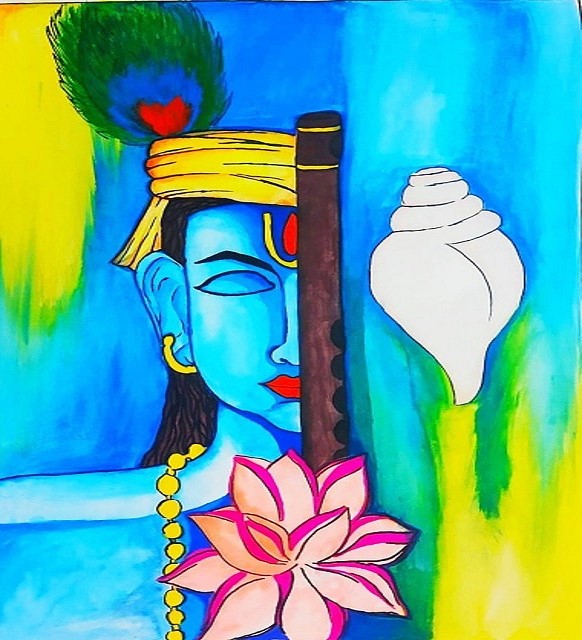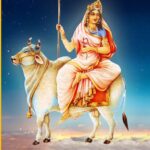
Janmashtami is the day we celebrate the birth of Lord Krishna. For the last 5100 and odd years, the birth of Krishna is being celebrated. But is Krishna ever born?
The immortal
It is like this – a potter makes a pot and suddenly the space is born inside the pot. Can you say the space is born now? No! Space was already there; it was only encapsulated with mud all around. Mud, by itself, didn’t have any value. Space by itself is available everywhere and it has no value. But when the mud and the space came together, it assumed a value.
The space inside the pot is beyond time and space. So, Krishna identified himself with the immortal space and not with the pot.
The reason
Janmashtami is of great significance for devotees because on this day they remember all the qualities that Krishna came to manifest. Space was already there, but it took a shape and form.
Our ancient seers are very intelligent. They said, “Yes, Krishna was never born but he manifested (prakat bhayo).” Krishna was there before too, but he became visible, he manifested. Why? It was the wish of the devotees to see Krishna with their eyes, to listen to him with their ears, and touch him with their hands. To fulfill these wishes of his devotees, Krishna manifested. Krishna was there earlier too, but he manifested (prakat bhayo).
An excuse to celebrate. An opportunity to remember (the Divine) a little more than other days. Krishna is one such personality that you can never forget because he is so complete. He is in everything: from a King to a thief, from a Guru to a disciple, from a warrior to someone who just runs away from a war, from one who takes responsibility, and one who shuns all responsibility. So, he has exhibited all aspects of existence. That is why Krishna is complete.
The celebration
People celebrate Janmashtami with dance and music. They sing praises of his Leela. Everyone should read the Gita. Why? The intellect which makes our life impure – to purify that intellect, it is very important to read the Gita.
Lord Krishna says that four types of people come to him:
- Those who are sad
- Those who want something in life
- Those who are inquisitive and want to know the truth
- The knowledgeable
Then He says, “There is no difference between the knowledgeable and me. Although everyone is dear to me.”
So, if you want to establish a relationship with Krishna, in which there is no difference, you need to take an interest in knowledge.
The essence from history
The beauty in our ancient stories is that they were never made location-specific or time-specific. Ramayana or Mahabharata are not just events that happened a long time ago, they are happening every day in our lives. The essence of these stories is eternal.
There is a deeper meaning to the story of Krishna’s birth too. Devaki symbolizes the body and Vasudev symbolizes the life force (prana). When prana rises in the body, joy (Krishna) is born. But the ego (Kamsa) tries to eliminate joy. Kamsa is Devaki’s brother which indicates that ego is born along with the body. A happy person does not create trouble for anyone. It is the one who is unhappy and emotionally wounded who ends up causing disruption. Those who feel an injustice has been done to them end up being unjust to others out of their hurt ego.
The biggest adversary of ego is joy. Ego cannot survive and has to bow down where there is joy and love. A person can hold a very high position in society, but he melts in front of his child. When the child falls ill, however strong the person is, they feel a little helpless. Ego melts when confronted with love, simplicity, and joy. Krishna is the epitome of joy, the quintessence of simplicity, and the very source of love.
Devaki’s and Vasudev’s imprisonment by Kamsa signifies that when the ego takes over, the body feels like a prison. When Krishna was born, the prison guards fell asleep. The guards here are the senses which protect the ego because they are turned outward when awake. Inner joy sprouts in us when the senses turn inwards.
The butter thief
Krishna is also known as the butter thief. Milk is the essence of nourishment, and curd is a cultured form of milk. When the curd is churned, butter comes up and floats on top. It is nourishing and yet light, not heavy. When our intelligence is churned, it becomes like butter. When knowledge dawns in the mind, one gets established in one’s self. Such a person remains unattached to this world and his mind does not sink in it. Krishna stealing butter is a symbolism depicting the glory of love. So attractive is Krishna’s charm and skill that he steals the minds of even the most dispassionate.
The peacock feather
Why does Krishna have the peacock feather on his head? A king is responsible for the whole society and that responsibility can become a burden, which sits on the head as the crown. But Krishna fulfills all his responsibility effortlessly, like a game. A mother never feels taking care of her children is a burden. Similarly, Krishna wears his responsibility lightly and plays his roles colorfully, just like the peacock feather on his crown.
The message of Janmashtami is that it is time to bring a wave of joy to society. Become seriously joyful!
In every facet of human existence, if you want to see completeness, the example is Lord Krishna. This Janmashtami, know that you have Krishna inside of you, and knowing this repose in yourself. We see Krishna outside and do pooja, that is fine, to begin with. But as you proceed on the spiritual path, see Krishna within.
Courtesy:
https://isha.sadhguru.org
https://www.artofliving.org/in-en/wisdom/sri-sri-message-janmashtami



No comment yet, add your voice below!